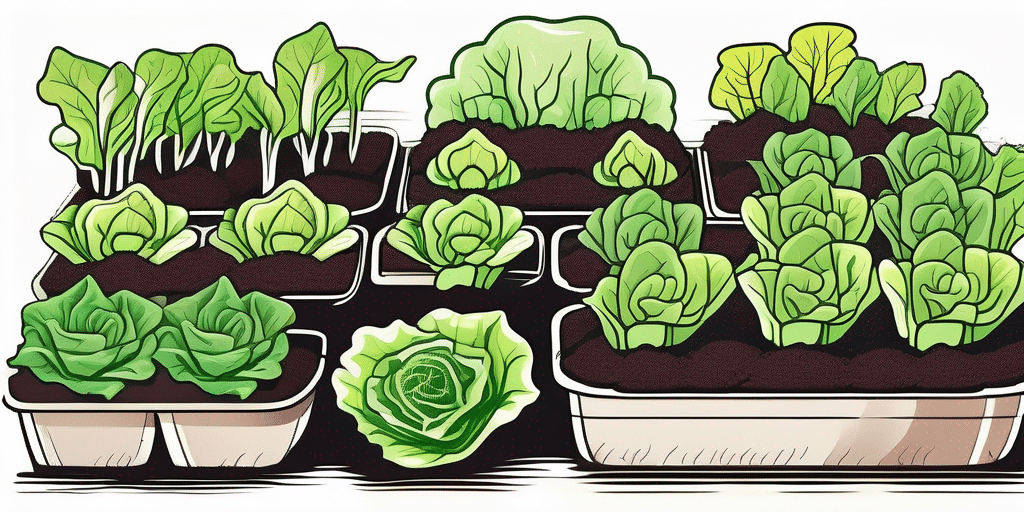Growing your own lettuce indoors can be a rewarding and cost-effective way to enjoy fresh greens year-round. It’s a simple process that even novice gardeners can master with a little patience and care. In this guide, we’ll walk you through the steps to successfully cultivate your indoor lettuce garden.
Why Grow Lettuce Indoors?
Before we delve into the how-to, let’s explore some reasons why you might want to consider growing lettuce indoors. Firstly, indoor gardening allows you to control the environment, protecting your plants from pests and harsh weather conditions. Secondly, it’s a great way to have fresh, organic produce at your fingertips, regardless of the season.
According to the USDA, lettuce is packed with essential nutrients like vitamin A, vitamin K, and folate, making it a healthy addition to any diet. Growing your own lettuce also means you know exactly what’s going into your food, reducing your exposure to harmful pesticides and chemicals.
Choosing the Right Lettuce Variety
There are several varieties of lettuce you can grow indoors, each with its own unique taste and texture. Some popular choices include:
- Romaine: Known for its crisp, sweet leaves, romaine is a favorite for salads and sandwiches.
- Butterhead: This variety has tender, buttery leaves that are perfect for wraps and sandwiches.
- Loose-leaf: As the name suggests, these lettuces don’t form a head, making them ideal for continuous harvesting.
When choosing a variety, consider your personal taste preferences, as well as the lettuce’s growth characteristics. Some varieties, like loose-leaf lettuces, are particularly well-suited to indoor growing because they can be harvested continuously.
Getting Started: What You’ll Need
Before you start planting, you’ll need to gather some basic supplies. Here’s what you’ll need:
- Seeds or seedlings: You can purchase lettuce seeds or seedlings from a local nursery or online.
- Containers: Any container with good drainage will work. Consider using pots, trays, or even recycled containers like egg cartons.
- Soil: Use a high-quality potting mix that’s rich in organic matter. Avoid garden soil, which can be too heavy for indoor plants.
- Light: Lettuce needs plenty of light to grow. A sunny windowsill, a fluorescent light, or a grow light can all do the trick.
- Water: Keep your lettuce well-watered, but avoid overwatering. The soil should be moist, not soggy.
Once you have your supplies, you’re ready to start planting!
Step-by-Step Guide to Growing Lettuce Indoors
Step 1: Planting Your Seeds
Start by filling your containers with potting mix. Plant your seeds according to the package instructions, usually about 1/4 inch deep. If you’re using seedlings, make a hole in the soil large enough to accommodate the root ball, then gently place the seedling in the hole and cover it with soil.
Water your seeds or seedlings thoroughly, then place the containers in a sunny location. If you’re using artificial light, position the light source about 6 inches above the plants and leave it on for 12-16 hours a day.
Step 2: Caring for Your Plants
Keep the soil consistently moist, but be careful not to overwater. If the leaves start to wilt or turn yellow, you may be watering too much. On the other hand, if the leaves start to look dry or brittle, you may need to water more.
Rotate your containers every few days to ensure all sides of the plant get equal exposure to light. This will help your lettuce grow evenly.
Step 3: Harvesting Your Lettuce
Lettuce can be harvested as soon as the leaves are large enough to eat. For most varieties, this is about 30 days after planting. To harvest, simply cut the leaves with a clean, sharp knife. Be sure to leave the base of the plant intact so it can continue to produce new leaves.
Remember, the fresher the lettuce, the better it will taste. So, try to harvest your lettuce just before you plan to eat it.
Common Problems and Solutions
Like any gardening endeavor, growing lettuce indoors can come with its own set of challenges. Here are a few common problems and their solutions:
- Leggy plants: If your lettuce plants are tall and spindly, they may not be getting enough light. Try moving them to a sunnier location or increasing the amount of artificial light they receive.
- Yellowing leaves: This could be a sign of overwatering. Let the soil dry out a bit before watering again.
- Pests: Indoor plants can still be susceptible to pests like aphids and whiteflies. If you notice small, discolored spots on your leaves, try washing the plants with a mild soap and water solution.
With a little patience and care, you can overcome these challenges and enjoy a bountiful harvest of fresh, homegrown lettuce.
Conclusion
Growing lettuce indoors is a fun and rewarding project that can provide you with fresh, nutritious greens year-round. With the right supplies and a little know-how, you can start your own indoor lettuce garden in no time. So why wait? Start growing your lettuce indoors today!
Join Our Green-Thumbed Community!
Ready to take your indoor gardening to the next level? Subscribe for free to How to Grow Everything and learn how to build the garden of your dreams! Receive personalized gardening advice tailored to your specific location, grow zone, and experience level. Enjoy the best gardening tips, special offers, and deals delivered straight to your inbox—100% free, with no spam, just from our family to yours. Let us help you grow not just lettuce, but everything, with our extensive library of free gardening articles. Become part of our growing community today!

